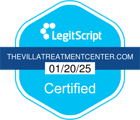This is not a simple question to answer. Yes, Ecstasy is a legal narcotic. No, Ecstasy is not a medical narcotic. What does this mean?
Ecstasy acts as a stimulant and a psychedelic and is classed as a Schedule 1 drug in the United States. This means that it has no accepted medical uses.
Narcotics Defined
In medical terms, a narcotic is an opioid that is used for relieving severe pain which cannot be helped by other painkillers. Such narcotics are prescribed by doctors. Some common medical narcotics are:
- Morphine
- Hydrocodone
- Codeine
- Oxydocone
The main ingredient of Ecstasy is MDMA, and that is not classed as a medical narcotic.
Legally speaking, a narcotic drug is merely one that is totally prohibited or one that is used in violation of government regulations. Any drugs that are listed in Schedule 1 have no currently accepted medical use in the United States and are not safe for use even under medical supervision.
Schedule 1 drugs are considered the most dangerous of psychoactive drugs, which can cause severe psychological or physical dependence. Although MDMA rarely causes an individual to become dependent on Ecstasy, because it is classified as a Schedule 1 drug, it is still viewed as having high abuse potential, and no use in medical treatment.
Is Ecstasy Addictive?
The short answer is yes, although research has produced varying results. Ecstasy is addictive to the extent that it affects the same neurotransmitters that other highly addictive drugs affect. When an individual takes Ecstasy, it alters the chemical responses of those neurotransmitters, thus leading to altering effects of the brain.
However, Ecstasy is not as habit forming when compared to other narcotics. It also doesn’t lead to physical dependence. But an individual who takes Ecstasy regularly can become psychologically dependent on it. This is because an individual under the influence of Ecstasy will experience higher sensations of stimulation and increased emotional intimacy. This leads to them wanting to take the drug again.
Persistent or binge use of Ecstasy will lead to the individual increasing their dosage, to achieve the initial effect. Withdrawal symptoms, usually appearing after binge use, can be depression, decreased appetite, fatigue and mood disorders, but usually resolve themselves, and don’t linger for long periods of time.
Should Classification for Ecstasy Change?
It has been suggested that the way recreational drugs are currently classified is an unscientific and arbitrary system. A new system of classification would put the drugs which have a very high risk of abuse potential in Schedule 1, which would be Heroin, Cocaine, Alcohol, Benzodiazepines, Methamphetamine and Tobacco, while drugs like LSD, Cannabis and LSD had much lower harm and abuse potential, so shouldn’t be on the list.
Ecstasy abuse can lead to psychological dependency and be harmful. There is life after addiction. The Villa Treatment Center is here to help you move past addiction to recovery. Call us to find out how we can support you on the journey.






